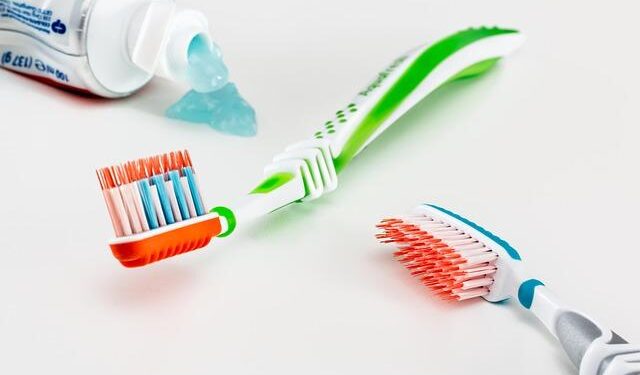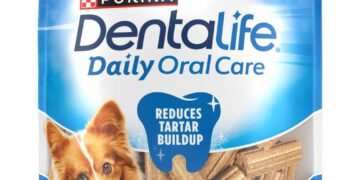Table of Contents
For the first decade of his life, my 8-pound terrier mix, Pip, was the center of my world and the source of my greatest anxiety.
It wasn’t about his health or his training; it was about the seemingly simple act of giving him something to chew.
I was trapped in a cycle of hope and failure that played out in the pet store aisle.
I’d buy the chews labeled “for small dogs” 1 or those promising to be “long-lasting”.2
I’d bring them home, and one of three things would happen: Pip would sniff it and walk away, he’d demolish it in under five minutes, or, worst of all, he’d start making a terrifying gagging sound.
The breaking point—literally and figuratively—came on a Tuesday afternoon.
I had splurged on a popular “indestructible” nylon bone, convinced by the marketing that its durability equaled safety.
A few minutes into his chew session, a panicked hacking sound sent me running into the living room.
Pip was gagging, pawing at his mouth.
A sharp, splintered piece of the nylon had broken off and gotten lodged in his throat.
The emergency vet visit that followed was a blur of fear and mounting bills.
The vet managed to remove the shard, but the incident left me shaken.
I had trusted the label, the reviews, and the conventional wisdom that a tough chew was a good chew.
And I had been dangerously wrong.
That single event shattered my confidence and made me question everything.
The very quality the industry promotes as a benefit—hardness—was the direct source of the danger.4
I started seeing the chew aisle not as a place of fun and enrichment, but as a minefield of potential hazards: tooth fractures, choking, intestinal blockages, and lacerations.6
I felt like countless other pet owners, lost in a sea of conflicting advice and worried that every choice I made could lead to another emergency.9
I needed a better way to think, not just a better list of products.
The Epiphany: Why Choosing a Dog Chew is Like Engineering a Dental Crown
My search for answers led me down a rabbit hole, far away from pet blogs and into the dense, technical world of human dentistry.
While researching the causes of tooth fractures, I stumbled upon the field of dental biomechanics.
It was a revelation.
Dentists and dental engineers don’t just pick a random material to fix a tooth; they study the entire oral system as a complex machine.10
They analyze the forces at play—the compressive force of a bite, the tensile stress on a filling, the shear force on a crown—and how those forces are distributed across the tooth’s structure.10
They know that concentrated stress leads to failure, which in dental terms means a cracked tooth or a failed restoration.12
To prevent this, they meticulously select materials like ceramics or composites based on specific properties: hardness, wear resistance, and, crucially, flexibility.13
The goal is to choose a material that works
in harmony with the natural tooth, absorbing and distributing forces safely rather than fighting against them.15
Suddenly, it all clicked.
I realized I wasn’t just giving Pip a toy.
I was introducing a foreign object into a complex biological system, just like a dentist installing a crown.
But I was doing it with none of the engineering foresight.
The common advice I’d heard, like the “thumbnail test”—pressing your thumbnail into a chew to see if it leaves an indent—wasn’t just a folk remedy.16
It was a surprisingly accurate, if simplified, way of measuring a material’s “elastic deformation”.17
A chew that “gives” a little under pressure has a lower modulus of elasticity, meaning it can absorb force without being so rigid that it fractures the tooth it’s pressing against.
This wasn’t just a trick; it was a principle of material science.
This new perspective gave me a powerful framework for evaluating any chew, moving me beyond the simplistic and dangerous marketing hype of “toughness.”
The Canine Chew Biomechanics Framework: A New Way to See
My research into dental biomechanics gave me a three-part framework to analyze any chew for my small dog.
It’s not about finding one “perfect” chew; it’s about understanding the interaction between the dog, the chew, and the act of chewing itself.
Pillar I: The Anatomy Factor – The Unique Blueprint of a Small Dog’s Mouth
The first and most critical mistake I made was accepting the industry’s label of “small dog chew” at face value.
This category primarily addresses a quantitative difference (size) while ignoring the far more important qualitative differences in a small dog’s oral anatomy.
Small dog breeds often have the same number of teeth as a Great Dane (42 adult teeth), but crammed into a much smaller space.18
This leads to significant overcrowding, where teeth are packed tightly together and often sit at odd angles.20
From a biomechanical perspective, this isn’t just a cosmetic issue; it creates abnormal stress points.
When a hard chew is introduced, the forces aren’t distributed evenly.
Instead, they concentrate on the misaligned edges of these crowded teeth, dramatically increasing the risk of a slab fracture, especially on the large upper premolars used for shearing.12
Furthermore, the jawbone itself in small and toy breeds is more fragile.
In cases of advanced periodontal disease—a condition to which small dogs are already highly susceptible due to that same overcrowding—the bone can become so weak that a tooth extraction, or even aggressive chewing, can lead to a jaw fracture.18
Simply shrinking a chew designed for the spacious, well-aligned jaw of a large dog is an engineering failure.
It doesn’t account for the unique, high-risk geometry of a small dog’s mouth.
I realized I didn’t need a
smaller chew; I needed a smarter chew, one designed for the specific mechanical challenges of a crowded mouth.
Pillar II: The Force Factor – It’s About Chewing Style, Not Just Strength
The term “power chewer” is vague and often misleading.
While data on bite force (measured in PSI) exists, it’s less relevant for small dogs than understanding their individual chewing style.22
A dog’s “chewsonality” is a critical variable that dictates which material properties are most important for safety.7
Through observation, I identified three primary styles, each with its own risk profile:
- The Gnawer: This dog applies steady, prolonged, and focused pressure, working on a single spot for long periods. Pip is a Gnawer. This style puts them at the highest risk for tooth fractures when given excessively hard materials like bone or antler, as the constant, focused force is exactly what causes stress fractures in teeth.4
- The Shredder: This dog’s goal is deconstruction. They use their teeth to rip, tear, and pull off small pieces. This style is less about brute force and more about persistent dismantling. For Shredders, the primary risk is ingesting indigestible pieces, such as plastic shards from a nylon toy or chunks of poorly made rawhide, which can lead to gastrointestinal obstruction.6
- The Gulper: This dog sees a chew as a challenge to be conquered and swallowed as quickly as possible. They often bite off large, unchewed pieces. Gulpers are at the most immediate and severe risk of choking or esophageal blockage.6
Identifying your dog’s style shifts your focus from a generic assessment (“my dog is a tough chewer”) to a specific risk profile (“my dog is a Gnawer, so I must prioritize chews with some flexibility to avoid tooth fracture”).
Pillar III: The Material Factor – The Scientific Properties of a Safe Chew
With a clear understanding of Pip’s anatomy (crowded) and chewing style (a Gnawer), I could finally evaluate the chew materials themselves through a biomechanical lens.
- Hardness vs. Elasticity (The Fracture Risk): This is the most critical factor. Any material harder than a tooth can break it.7 Based on overwhelming warnings from veterinary dental specialists, I immediately blacklisted several popular chews.
Real bones, antlers, and cow hooves are dangerously hard and notorious for causing slab fractures.4
Hard nylon and plastic chews fall into the same category, offering no “give” and posing a high fracture risk.26 Many
yak and hard cheese chews, while digestible, are also extremely hard and have been linked to broken teeth in small dogs.9 The “thumbnail test” became my non-negotiable first check: if I can’t make a dent, Pip isn’t chewing it.16 - Durability vs. Digestibility (The Obstruction Risk): For chews that are meant to be consumed, the key is balancing durability with safe digestion. Traditional rawhide fails this test spectacularly. It is often treated with harsh chemicals, is poorly digestible, and can swell in the digestive tract, creating a severe blockage risk.29 Safer alternatives are made from single-ingredient, highly digestible sources like
bully sticks, beef tendons, collagen chews, or dehydrated animal parts like beef trachea.3 These materials break down safely in the stomach, but supervision is still key to prevent a “Gulper” from swallowing a large piece whole.6 - Surface Texture & Abrasiveness (The Dental Health Promise): A chew’s surface can either help or harm. The textured surfaces of VOHC (Veterinary Oral Health Council)-approved dental chews are specifically engineered to create a mechanical scraping action that removes plaque and tartar.35 This is beneficial abrasion. In contrast, the fuzzy surface of a
tennis ball acts like sandpaper, wearing down precious enamel over time, especially when combined with dirt and grit.26 - Geometry & Shape (The Force Distribution Factor): The most advanced chews use shape as an engineering tool. The unique Z-shape of Virbac C.E.T. VeggieDent chews or the nubs and ridges on Greenies are not random; they are designed to ensure teeth clean multiple surfaces and to distribute chewing forces effectively.37 Stuffable rubber toys like
Kongs or West Paw Toppls take this a step further, changing the chewing dynamic entirely. They shift the dog’s goal from destruction to extraction, providing mental stimulation while using a material that is durable yet flexible, posing a very low risk of fracture or ingestion.7
Putting Theory into Practice: My Curated Chew Strategy for Pip
Armed with this new framework, I finally felt equipped to walk back into the pet store.
I was no longer a confused consumer but an informed curator for my dog.
I threw out all the old, risky chews and developed a simple, biomechanically sound rotation for Pip.
The “Biomechanically Sound” Chew Rotation:
- For Daily Dental Health: I give Pip one VOHC-approved dental chew each day. My preferred options are Greenies Petite or Virbac C.E.T. VeggieDent FR3SH (Extra Small).
- Justification: These products have been scientifically proven to reduce plaque and tartar, are designed with a safe hardness level, and are highly digestible, making them perfect for daily use.36
- For Satisfying the Gnawing Instinct: A few times a week, for longer chew sessions, I offer a size-appropriate bully stick (always in a safety holder to prevent him from swallowing the last bit) or a dehydrated beef trachea.
- Justification: These are made of natural, single-ingredient protein that is fully digestible. They are softer than bone or antler, satisfying his need to gnaw without posing an unacceptable fracture risk.3
- For Mental Stimulation & Boredom Busting: When I need to keep him occupied, I use a West Paw Toppl (Small) or a KONG Classic (Small) stuffed with a bit of his food or a safe spread and then frozen.
- Justification: These toys redirect his chewing energy into a puzzle. The rubber is extremely durable but flexible enough to be safe on his teeth, and the risk of him ingesting the toy itself is virtually zero with supervision.7
The “Never Again” List (The Blacklist):
Based on my framework, some items are now permanently banned from our house.
- Real Bones, Antlers, and Hooves: The hardness is an unacceptable risk for tooth fracture in any dog, especially a small one.4
- Hard Nylon/Plastic Chews: They are too hard and can splinter into sharp, indigestible plastic shards.7
- Low-Quality or Imported Rawhide: The risk of chemical contamination, bacterial load, and dangerous swelling in the gut is too high.29
- Ice Cubes, Rocks, or Sticks: These are not toys and pose obvious fracture and splintering risks.5
To make this clear, I’ve summarized my findings in a simple matrix to help other small dog owners make safer choices.
Table 1: The Small Dog Chew Safety Matrix
| Chew Type | Hardness (Fracture Risk) | Durability vs. Digestibility (Obstruction/Choking Risk) | Primary Benefit | Overall Small Dog Suitability |
| Whole Antlers/Bones | Very High (Unsafe) | Very Low Digestibility; Splinters | Long-lasting | AVOID |
| Hard Nylon Chews | Very High (Unsafe) | Indigestible; Sharp Shards | Long-lasting | AVOID |
| Yak/Hard Cheese Chews | High (High Risk) | Digestible but can be swallowed in large chunks | Long-lasting | USE WITH EXTREME CAUTION (Soften first) |
| Low-Quality Rawhide | Varies (Can be very hard) | Low Digestibility; Swells; Chemical/Bacterial Risk | Long-lasting | AVOID |
| Bully Sticks (Size-Appropriate) | Moderate (Safer) | High Digestibility; Choking risk if swallowed whole | Gnawing Satisfaction | RECOMMENDED (with holder) |
| Collagen Chews / Trachea | Low-Moderate (Safe) | High Digestibility | Gnawing Satisfaction | RECOMMENDED |
| VOHC-Approved Dental Chews | Low (Very Safe) | Very High Digestibility | Dental Health | HIGHLY RECOMMENDED |
| Durable Rubber Toys (e.g., Kong) | Low (Very Safe) | Indigestible but designed not to be consumed | Mental Stimulation | HIGHLY RECOMMENDED |
Conclusion: Becoming Your Dog’s Confident Chew Curator
The journey from that terrifying vet visit to today has been one of empowerment.
I’ve gone from a state of constant worry, passively trusting marketing labels, to a place of confidence, actively analyzing the products I bring into my home.
Pip is happier and safer, enjoying a variety of chews that meet his needs without compromising his health.
The lesson from human dentistry wasn’t just about teeth; it was about adopting a more critical, scientific mindset.
The goal is not to find a single “best” or “toughest” chew.
It is to become your dog’s personal chew curator—an informed expert who understands the unique biomechanics of their own dog’s mouth and chewing style.
By thinking like an engineer, you can move past the hype and build a chew strategy that is truly safe, enriching, and tailored perfectly to the little dog you love.
Works cited
- Extra Small & Toy Breeds Bones, Bully Sticks & Natural Dog Chews – Chewy, accessed August 12, 2025, https://www.chewy.com/f/extra-small-toy-breeds-bones-bully_c1540_f6v13789
- The 5 best long-lasting dog chews, recommended by vets – PetsRadar, accessed August 12, 2025, https://www.petsradar.com/buying-guides/longest-lasting-dog-chews-six-treats-to-keep-your-dogs-teeth-busy
- Best Long Lasting Dog Chews to Keep Your Dog Busy – Homes Alive Pets Blog, accessed August 12, 2025, https://blog.homesalive.ca/dog-blog/long-lasting-dog-chews-to-keep-your-dog-busy
- Vet-Recommended Dog Chews: What Can Dogs Chew on Safely (& What They Can’t), accessed August 12, 2025, https://toegrips.com/safe-chewing-toys-for-dogs-chews-wisely/
- 7 Chew Toys That Can Damage Your Dog’s Teeth | Cherry Hill Animal Hospital, accessed August 12, 2025, https://www.cherryhillanimalhospital.com/blog/7-chew-toys-that-can-damage-your-dog-s-teeth
- Position Statement on Dog Chews/Treats – ASPCA, accessed August 12, 2025, https://www.aspca.org/about-us/aspca-policy-and-position-statements/position-statement-dog-chewstreats
- Dangers of Popular Dog Chews & Safer Choices | Preventive Vet, accessed August 12, 2025, https://www.preventivevet.com/dogs/potential-dangers-of-popular-dog-chews
- Best & Worst Dog Chews; Safety First! – Dog Tired Adventures, accessed August 12, 2025, https://www.dogtiredadventuresca.com/blog/best-amp-worst-dog-chews-safety-first-yt2ry
- What things are truly safe for dogs to chew on? – Reddit, accessed August 12, 2025, https://www.reddit.com/r/dogs/comments/1bc9unc/what_things_are_truly_safe_for_dogs_to_chew_on/
- Biomechanics in Dentistry: A Comprehensive Guide, accessed August 12, 2025, https://www.numberanalytics.com/blog/ultimate-guide-to-biomechanics-in-biomaterials-in-dentistry
- Clinical presentations of stress distribution in teeth and the significance in operative dentistry, accessed August 12, 2025, https://www.researchgate.net/publication/11934767_Clinical_presentations_of_stress_distribution_in_teeth_and_the_significance_in_operative_dentistry
- Stress Analysis of Occlusal Forces in Canine Teeth and Their Role in the Development of Non-Carious Cervical Lesions: Abfraction – PMC – PubMed Central, accessed August 12, 2025, https://pmc.ncbi.nlm.nih.gov/articles/PMC3419420/
- Exploring the Role of Biomechanics in Modern Dentistry | Brisbane …, accessed August 12, 2025, https://www.brisbanelaserdentist.com/blog/exploring-the-role-of-biomechanics-in-modern-dentistry/
- Special Issue : Surface Properties of Dental Restorative Materials – MDPI, accessed August 12, 2025, https://www.mdpi.com/journal/jfb/special_issues/UFWK8E86U6
- (PDF) The Intersection of Biomechanics, Dentistry, and Science …, accessed August 12, 2025, https://www.researchgate.net/publication/386086828_The_Intersection_of_Biomechanics_Dentistry_and_Science_Materials_in_Developing_Next-Generation_Dental_Prostheses
- Don’t Chew On This! – AAHA, accessed August 12, 2025, https://www.aaha.org/resources/dont-chew-on-this/
- General Properties of Dental Materials, accessed August 12, 2025, https://www.uoanbar.edu.iq/eStoreImages/Bank/10608.pdf
- Tailored Tips: Dental Care Needs for Different Dog Breeds|Torrey …, accessed August 12, 2025, https://torreypinesvets.com/affordable-pet-dental-care-in-san-diego-ca/tailored-tips-dental-care-needs-for-different-dog-breeds/
- Dog Oral Anatomy: Components, Dental Problem, and Prevention – Honest Paws, accessed August 12, 2025, https://www.honestpaws.com/blogs/health/dog-oral-anatomy
- animaldental.com.au, accessed August 12, 2025, https://animaldental.com.au/dental-challenges-of-small-dog-breeds/#:~:text=Small%20dog%20breeds%20often%20have,between%20teeth%20is%20pretty%20common.%E2%80%9D
- Understanding Dental Challenges of Small Dog Breeds | AAD, accessed August 12, 2025, https://animaldental.com.au/dental-challenges-of-small-dog-breeds/
- Top Dog Breeds With The Strongest Bite Force – Updated Statistics, accessed August 12, 2025, https://theclarklawoffice.com/dog-bite-attorneys/strongest-bite-strength/
- XL Bullies, Pitbulls, and German Shepherds do NOT bite harder than other dog breeds – and ‘jaw lock’ is a MYTH, vets claim – Reddit, accessed August 12, 2025, https://www.reddit.com/r/pitbulls/comments/1ihenpf/xl_bullies_pitbulls_and_german_shepherds_do_not/
- The Truth About Nylon Dog Toys: What Every Dog Owner Needs to Know – Petopia Toys, accessed August 12, 2025, https://www.petopiatoys.com/blog/nylon-dog-toys.html
- Protecting Your Pet from Common Choking Hazards | Advanced Veterinary Specialists, accessed August 12, 2025, https://www.avs4pets.com/blog/protecting-your-pet-from-common-choking-hazards
- 5 Chew Toys to Avoid – Friendship Hospital for Animals, accessed August 12, 2025, https://friendshiphospital.com/dentistry/chew-toys-to-avoid/
- Are nylonbones safe for dogs? 6 Healthier Nylonbone Alternatives – Tibetan Dog Chew, accessed August 12, 2025, https://tibetandogchew.com/blogs/blog/are-nylabones-safe-for-dogs
- Good Bad List | Veterinary Dental Services, LLC, accessed August 12, 2025, https://veterinarydental.com/wp-content/uploads/2017/06/Good-Bad-List.pdf
- The Benefits and Risks of Chew Treats – Today’s Veterinary Practice, accessed August 12, 2025, https://todaysveterinarypractice.com/nutrition/the-benefits-and-risks-of-chew-treats/
- Something to Chew on: Is Rawhide Safe for Your Dog? Do’s and Don’ts and Safety Tips, accessed August 12, 2025, https://dogsinc.org/blog/ask-the-vet/is-rawhide-safe-for-your-dog/
- The Raw Truth About Rawhide: Is Rawhide Bad for Dogs? | Tartar Shield, accessed August 12, 2025, https://www.tartarshield.com/blogs/health/the-raw-truth-about-rawhide-is-rawhide-bad-for-dogs
- Natural Dog Chews | Sourced & Made in the USA, accessed August 12, 2025, https://campfiretreats.com/collections/dog-chews
- Natural Dog Chews | Farm Hounds, accessed August 12, 2025, https://farmhounds.com/collections/bulk
- Ranking Popular Dog Chews from Best to DANGEROUS – YouTube, accessed August 12, 2025, https://www.youtube.com/watch?v=pOaivLQJbFo
- Effects of novel dental chews on oral health outcomes and halitosis in adult dogs – PMC, accessed August 12, 2025, https://pmc.ncbi.nlm.nih.gov/articles/PMC7511057/
- 7 Best Dental Chews for Dogs in 2025, Recommended by Vets | PetMD, accessed August 12, 2025, https://www.petmd.com/vet-verified/best-dental-chews-dogs
- Choosing the Right Chew Toys and Treats for Your Pet: A Guide Backed by the VOHC, accessed August 12, 2025, https://www.tribecavetdentistry.com/post/choosing-the-right-chew-toys-and-treats-for-your-pet-a-guide-backed-by-the-vohc
- Dental Delights Extra-Small Dog Dental Chews – Vet Formulated Natural Dental Treats for Fresh Breath & Proven Tartar/Plaque Control – Stella & Chewy’s, accessed August 12, 2025, https://www.stellaandchewys.com/products/dental-delights-extra-small-chicken-parsley-flavor
- A Guide to Safe Dog Chews and Non-Toxic Toys | The National Canine Cancer Foundation, accessed August 12, 2025, https://wearethecure.org/chews-wisely-a-guide-to-safe-dog-chews-and-non-toxic-toys/
- Accepted Products | Veterinary Oral Health Council, accessed August 12, 2025, https://vohc.org/accepted-products/
- 7 Signs Your Dog Needs a Better Chew – Bully Sticks Direct, accessed August 12, 2025, https://www.bullysticksdirect.com/blog/7-signs-your-dog-needs-a-better-chew/
- Ditch the Sticks: A Safe, Healthy Chew Guide for Dog Owners – Los Angeles Times, accessed August 12, 2025, https://www.latimes.com/companion-animals/dogs/care/story/safe-dog-chew-teeth-and-health-guide
- 5 Dangerous Items Dogs Like to Chew – Roundwood Vets, accessed August 12, 2025, https://www.roundwoodvets.co.uk/single-post/5-dangerous-items-dogs-chew




